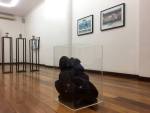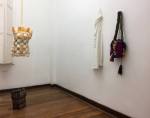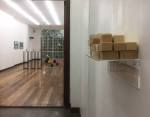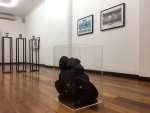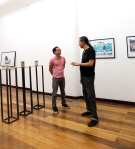The Sewer Soaperie, part of The Apocalypse Project body of work, will be at the month-long DISPOSABLE group exhibition by Science Gallery Melbourne beginning August 1.

The Sewer Soaperie is an interactive experimental art project about turning raw sewage and used fats into soap to raise awareness on the fatbergs clogging sewer systems around the world, and how this will worsen flooding brought about by the more intense storms of the Anthropocene.

From observing the consequences of fatbergs in Manila to pursuing it as a residency project in Medellin, to being exhibited at 1335Mabini art gallery and presented at a USAID Climate-Resilient development conference in Bangkok, The Sewer Soaperie finally goes back to its interdisciplinary art/science roots with Science Gallery.

The DISPOSABLE exhibition is a month-long pop-up of installations, experiments, and events. From the programme:
The lid has been lifted on human wastefulness, but what next? Science Gallery Melbourne’s pop-up season, DISPOSABLE, takes you on a dumpster dive to find creative solutions to our throwaway culture.
Curated with young adults for young adults, the season will be an experimental trash bag of installations, exhibits and events at sites throughout Melbourne.

The Sewer Soaperie will be at Testing Grounds, Southbank from July 31 – August 3, and The University of Melbourne at Macfarland Court from August 5 to 18. It was also be part of the Extrasensory exhibition at the Parliament of Victoria on August 10 from 6PM to 10PM for National Science Week.
The audience will be invited to wash their hands with the soaps, but please do so at your own risk. There are three types of soaps: those made from palm oil, those made from used oils, and those made from sewage. These were all boiled and then mixed with the appropriate amount of sodium hydroxide method to create soap. If you’d rather not touch the soaps (I don’t blame you), there are other ways of perceiving the work, such as through sight (Observe the physical differences and ask what type of fats might be in these different-colored soaps?) and smell (Some have said they smell like cookies, others have said chicken. What do you think they smell like?)

Follow the hashtag #SewerSoaperie for updates!
Image credits: First image – 1335Mabini; all the rest: Studio Catherine Sarah Young (Photography by Rache Go, hair and makeup by Rori de la Cruz). Thank you to Science Gallery Melbourne curators Tilly Boleyn, Veronica Dominiak, and Ryan Jefferies, and the fantastic Science Gallery Melbourne team!














